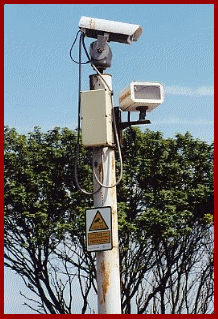| ||||||||||||||||||||||||||||||
Welcome to the | ||||||||||||||||||||||||||||||
 | ||||||||||||||||||||||||||||||
 | ||||||||||||||||||||||||||||||
Everything you need to | ||||||||||||||||||||||||||||||
HARDWIRED CONTROL UNITS Historically, Hardwired Control systems, in other words, a simple arrangement whereby a piece of equipment, whether it be a pan / tilt head or a motorised zoom lens, is controlled by sending the correct driving voltages directly down a multicore cable (any cable with more than two individual conductors contained within an outer sheath, is generally described as a multicore), has been around since the earliest days of Closed Circuit Television. Although there have been quite a range of basic hardwired controllers available for single cameras (some still available), the majority of complex multicamera installations that were set up in the ‘70s and early ‘80s, generally had custom built control panels with banks of selector switches for individual camera units. Although Telemetry has really become the control system of choice in recent years, there is still a place for hardwired systems, particularly with basic single camera applications. The main problems with direct driving a remote control camera have generally been cable length and cost. Whilst a decent quality multicore cable can become rather expensive over longer distances, the basic principles of electrical conductivity apply, so the further away the camera, the thicker the cable conductor needs to be, in order to overcome the problems of ‘voltage drop’. For most applications requiring control of a P/T head, a zoom lens and a couple of ancillary switches (e.g. remotely switched lighting or a door release) a twelve core cable is normally adequate (zoom lens - 4 conductors, P/T head - 6 conductors + 2 spares), with 16/0.2mm conductors being a reasonable choice for distances of up to 100 metres or so. | ||||||||||||||||||||||||||||||
 | ||||||||||||||||||||||||||||||
IMPORTANT: No material may be reproduced, copied or redistributed from this site, © doktorjon.co.uk 2004 - 2008 Homepage...:...Gateway...:...Technical Gateway....:....Quickfind Index....:....Equipment Directory | ||||||||||||||||||||||||||||||

